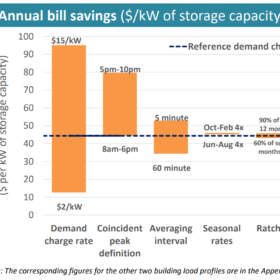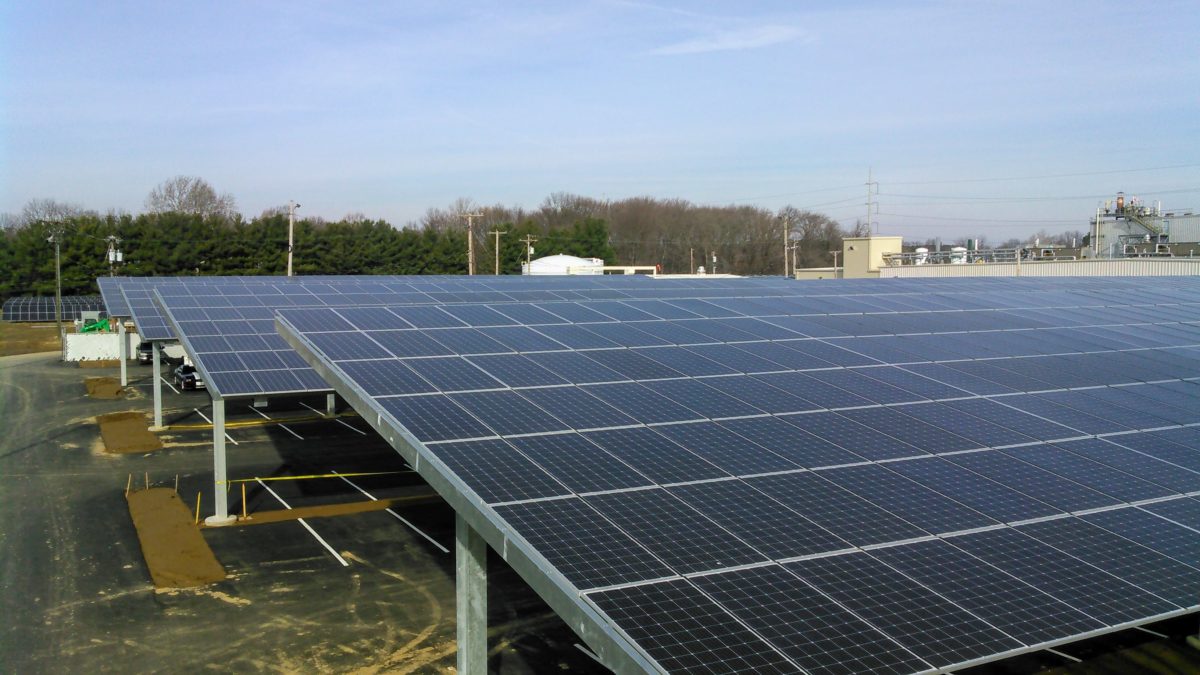Regulators in Delaware have sided with a Millsboro man who filed a formal complaint against Delmarva Power over a $500/month demand charge for his solar system.
Richard Spinks is the owner of GiggleBugs, an early-learning center in Millsboro which has had a solar installation since 2017. Under Delmarva’s billing structure, any solar-equipped customer who uses 3,500 kWh or more for two consecutive months, as Spinks has, is considered a “medium” customer and is subject to a monthly demand charge based on the customer’s peak usage that month.
Spinks found that he was being charged under the demand usage provision for an energy “draw” at night, disregarding that his solar system’s monthly generation outpaced his usage. The charge was not included on his electric bill and not mentioned in Delmarva’s energy tariff.
In the ensuing case, the Delaware Public Service Commission found the practice to be against the law and, in its decision, redefined the word “usage” in Delmarva’s billing protocol to mean “net usage,” not “gross usage.”
For Spinks, the issue was not purely financial, but one based on principle, as Spinks shared with the Associated Press that he did not suffer any financial harm from Delmarva’s interpretation of the tariff. Spinks was relieved from paying the tariff during his complaint.
Not all charges equal
While the monthly costs faced by Spinks were extraordinarily high, much higher than other demand charges known to pv magazine, demand charges as a whole are not necessarily evil, nor as inherently anti-solar as a monthly generation fee or a grid access charge.
This is because while demand charges can be hampering, they contain that key word: demand. Demand is something that can be worked around by coupling a system with battery storage, effectively limiting how much of a pinch the customer feels from the charge.
Over the summer, Researchers at the US Department of Energy’s Lawrence Berkeley National Laboratory (LBNL) published “Implications of Rate Design for the Customer Economics of Behind the Meter Storage.” The document models how electric company demand charges and electricity pricing arbitrage drive the economic payback of energy storage when installed on the customer’s side of the electric meter (behind the meter).
The report uses a shopping center to illustrate the effects on storage payback, as the analysis suggested this type of customer would be able to benefit, due to its higher load profile. The findings pointed to a $7/kW demand charge driving a ten year payback. It also shows that if your demand peak aligns with the evening demand window, the payback period is higher and that shorter demand charge billing intervals pay better.
The example serves to illustrate that the higher the demand charge is, coupled with when the customer’s peak demand is, both play heavily into how long it will take a customer to start seeing net value from their storage system. Areas with high demand charges and long peak demand periods incentivize storage.
That benefit, however, is one that will not be known to Richard Spinks or any other solar customer in Delmarva Power’s service area in the immediacy. Their demand charges are no more, so long as their systems keep generating.

This content is protected by copyright and may not be reused. If you want to cooperate with us and would like to reuse some of our content, please contact: editors@pv-magazine.com.









By submitting this form you agree to pv magazine using your data for the purposes of publishing your comment.
Your personal data will only be disclosed or otherwise transmitted to third parties for the purposes of spam filtering or if this is necessary for technical maintenance of the website. Any other transfer to third parties will not take place unless this is justified on the basis of applicable data protection regulations or if pv magazine is legally obliged to do so.
You may revoke this consent at any time with effect for the future, in which case your personal data will be deleted immediately. Otherwise, your data will be deleted if pv magazine has processed your request or the purpose of data storage is fulfilled.
Further information on data privacy can be found in our Data Protection Policy.